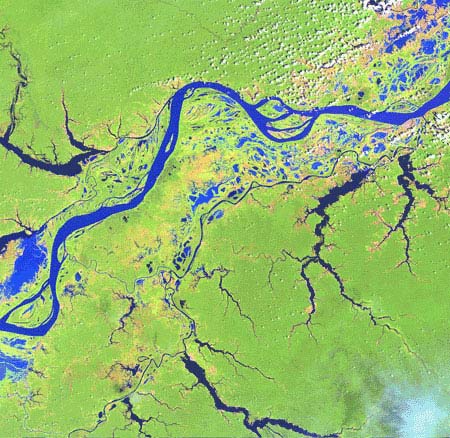The Ancient Trees of the Amazon

Trees in the Amazon grow slower and are older than scientists thought, a discovery that has implications for computer models of climate change.
Up to half of all trees greater than 4 inches (10 centimeters) in diameter in Amazon tropical forests are more than 300 years old, the study found. Some are 1,000 years old.
"Little was known about the age of tropical trees, because they do not have easily identified annual growth rings," said study team member Susan Trumbore of the University of California at Irvine. "No one had thought these tropical trees could be so old, or that they grow so slowly."
The conclusions result from radiocarbon dating methods. The results were reported last week in the online edition of the Proceedings of the National Academy of Sciences.
The finds have implications for the role the Amazon plays in determining global carbon dioxide levels. Carbon dioxide is a greenhouse gas, acting like a blanket to trap solar energy near the surface.
Trees and other plants soak up carbon dioxide, cleaning the air.
Because the trees are old and slow-growing, the Amazon forests, which contain about a third of all carbon found in land vegetation, have less capacity to absorb atmospheric carbon than previous studies predicted, Trumbore and her colleagues said.
Get the world’s most fascinating discoveries delivered straight to your inbox.
"In the Central Amazon, where we found the slowest growing trees, the rates of carbon uptake are roughly half what is predicted by current global carbon cycle models," Trumbore said. "As a result, those models—which are used by scientists to understand how carbon flows through the Earth system—may be overestimating the forests’ capacity to remove carbon dioxide from the atmosphere."
The oldest known tree is a bristlecone pine in California. At an estimated age of 4,700 years, it is nicknamed Methuselah after a Biblical character purported to have reached the age of 969.
- See the Oldest Thing on Earth
- 2,000-Year-Old Seeds Produce Sapling
- World's Oldest Noodles Alter View of Ancient Diet
 Live Science Plus
Live Science Plus






